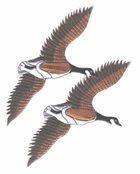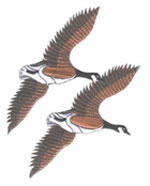The history of small arms use in warfare is arguably one of ammunition.
The invention of cartridges with smokeless gunpowder, and repeating firearms were great steps forward. In the mid twentieth century, the problem existed of cartridges that were too powerful (rifles), or too weak (pistol) for creation of the ideal individual weapon for the infantryman. Thus at the start of WW2 soldiers relied on weapons that were little more than variations on the stock weapons that had been designed some years previously.
A need for an intermediate weapon soon became apparent. Ideally this would be a weapon that bridged the gap between the smaller rounds that were suitable for pistols and sub-machine guns; and the larger, heavier rifle rounds. It would need to be capable of automatic fire, but not too heavy and with an acceptable degree of range and accuracy. The cartridge that such a weapon would fire would be the key to its development.
The first moves towards developing such a cartridge began in both the USA and Germany in the 1940s.
In 1943 an intermediate cartridge was created in the USSR. It received the designation of 7.62x39 M43. By 1945 in the USSR research and development had begun on creating an automatic rifle that would use this intermediate cartridge.
One of the men involved in this evolution was a young, self-educated designer known as Michael.
Kalashnikov was born in 1919 in rural Siberia. Despite the fact that he only completed his seventh year of schooling, he would become the father of a weapon that has seen use the world over, and is an instantly recognisable icon.
The nucleus of Kalashnikov’s idea came about during Word War Two. Kalashnikov was serving as a tank commander in 1941 when he was wounded. While he was recuperating from his injuries he set about designing a new rifle for the Red Army. Thus the Red Army would lose a tank commander, but the world would gain an outstanding weapons designer.
Kalashnikov’s early prototypes suffered from some flaws, including accuracy problems. It was however reliable and durable, and development continued. The reliability of the rifle is probably the most compelling factor that ensured its continued manufacture, as the Soviet Union desperately needed a reliable weapon that could easily be mass produced in the post-war devastation environment.
So, in 1947, in keeping with the Russian tradition of naming automatic weapons “automat”, the Automat of Kalashnikov-47 or АK-47 was released.
The first ten years or so of its life were marked by sluggish production and distribution to Soviet armed forces and allies. Most still preferred the Russian SKS, an auto-loading carbine that took an intermediate cartridge but lacked an automatic fire option.
By 1959 the AK-47 had undergone significant evolution, improving the overall package, including any concerns about accuracy. It was now known as the AKM, (however it would always remain the AK-47 in the popular lexicon).
At around this time external manufacturing licences were granted, first to communist China, and soon thereafter other allies in Europe and Third World countries.
Today the АK-47 can still be found in action in theatres of war the world over. In the 60 years since it was first produced there have been few conflicts where the ubiquitous weapon has not played a role. It’s estimated that the total quantity manufactured, including copies, exceeds 90,000,000 units.
In spite of the fact that this weapon already is appreciably obsolete, modern assault rifles have not managed to replace the АK in local conflicts. In very recent times Venezuela has ordered its modernised variant the АK-103. Neavtomatichesky civil versions are also popular from Russia to the USA.
Its cheapness and reliability have made it especially attractive for guerrilla armies. Made in China from the bad metal, covered with rust and dirt, in the hands of an African teenager it continues to carry out its basic purpose - to sow death.
The AK’s designer Michael Kalashnikov holds 35 various patents as a result of his invention. About the only patent that he does not hold is for the automatic rifle itself!
© Copyright Igor Potekhin 2009
Translated by John O'Brien



